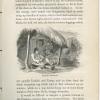Drawing of a Bulgarian settlement
Drawing in pencil by Arthur Evans of two men sitting beneath the porch of a thatched building, identified as a depiction of Bulgarians at a small Bulgarian settlement in Maksimir Park on the outskirts of Zagreb, Croatia. One of men is tying bunches of onions, preparing the crop for sale in the market.
Artist: Arthur John Evans
Date of drawing: August 1875
Continent: Europe
Geographical area: Southern Europe
Country: Croatia
Region/Place: Zagreb
Cultural group: European Bulgarian
Format: Drawing
Size: 83 x 142 mm
Acquisition: Joan Evans. Donated August 1941
***
Exhibition caption: ‘One of a selection of drawings and ink sketches made by Arthur Evans while travelling with his brother through Bosnia and Herzegovina in the summer of 1875. They show people and places encountered by the pair on a route south from Agram (modern-day Zagreb) – via Tešanj, Sarajevo and Mostar – to Ragusa (Dubrovnik), which Evans and his wife were later to make their home. The illustrations demonstrate a particular interest in identity and dress, Evans writing, for example, of finding “two Bulgarians hard at work tying up bundles of onions, clad in their dark national costume – the brown tight-sleeved jacket embroidered with black, the dull red sash, the brown trowser-leggings which are equally Turkish and Tartar and on their head the black sheepskin cap which had at first attracted my attention.” As well as being an aide-mémoire, the drawings provided the basis for engravings published in Evans’ account of his journey, Through Bosnia and the Herzegóvina on Foot during the Insurrection, August and September 1875 (London, 1876). As an eyewitness account of a distant region in turmoil, the book was an immediate success, quoted extensively in Parliament, and it went into a second edition the following year.’ Source: ‘Travels in Finland and Bosnia-Herzegovina: An Ethnographic Collection of Sir Arthur Evans’, exhibition curated by Philip Grover, Pitt Rivers Museum, University of Oxford, 29 April to 1 September 2013.
Primary documentation: ‘[p.588] Dr. JOAN EVANS, from the property of the late SIR ARTHUR EVANS, Youlbury, Boars Hill, Oxford. [List of items follows]’; ‘[p.590] 21 Original pencil sketches, types & scenery. BALKANS’: Pitt Rivers Museum accession records (Donations X, 1937–1941), pp.588, 590.
Research notes: It has been identified by Philip Grover that this original drawing was used as the artwork for a woodcut engraving subsequently published in Arthur J. Evans, Through Bosnia and the Herzegóvina on Foot during the Insurrection, August and September 1875 (London, 1876), p.29, printed with the caption ‘Bulgarian Settlement’. Evans recorded in the volume: ‘I had noticed in the market, sitting apart from the light Croat country people, a man selling vegetables of a different kind to the others, with vestments of a duller hue, and on his head a black conical sheepskin cap, which recalled to mind the head-gear of the Bulgarians of the Lower Danube, and sure enough a Bulgarian he turned out to be. On enquiring I found that a small Bulgarian colony had settled near the Archbishop’s Park of Maximir, to tracking out which I devoted my last afternoon at Agram. [...] The colony consisted of two very rude straw-thatched sheds, which seemed all thatch and no wall, insomuch that on approaching them I at first mistook them for two long, irregular haystacks. One of the hovels was for dwelling-house and the other as a shelter for vegetable stores, filled with gherkins and onions, and overgrown by a vine-leaved pumpkin. The dwelling-house had a kind of porch or atrium; that is to say, the thatched eaves, supported by two poles, projected almost as far in front of the door as the one room extended behind it. Under this canopy were seated two Bulgarians, hard at work tying up bundles of onions, clad in their dark national costume - the brown tight-sleeved jacket embroidered with black, the dull red sash, the brown trowser-leggings which are equally Turkish and Tartar, and on their head the black sheepskin cap which had at first attracted my attention; while on a peg behind hung one of their heavy mantles of the same black, shaggy sheepskin. [...] They had come all the way up the Danube and Save to scrape together money by their superior agricultural industry among the lazier Croats, and having brought with them some of their native seeds, were able to expose for sale gherkins of peculiar forms, and finer kinds of onions, in the Agram market’: Through Bosnia and the Herzegóvina on Foot, pp.27, 28–29, 32. Note that Agram is the German name for Zagreb, Croatia.

